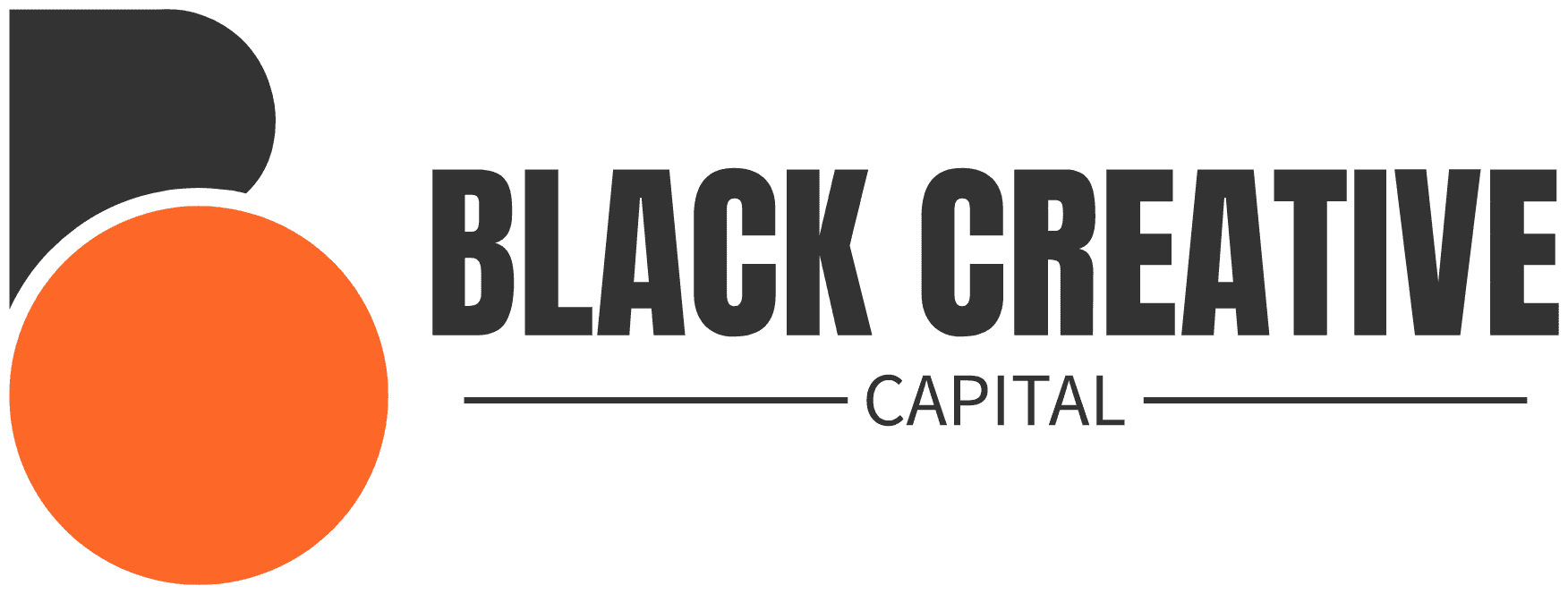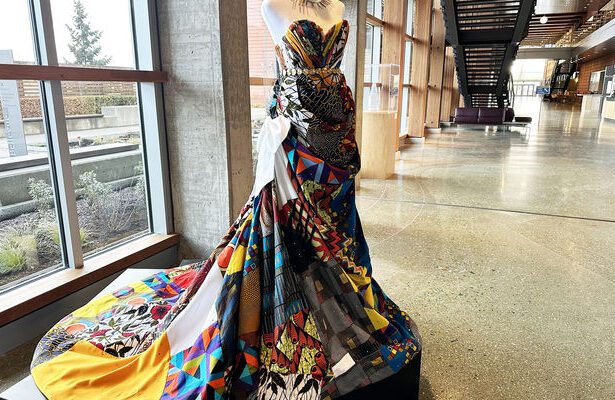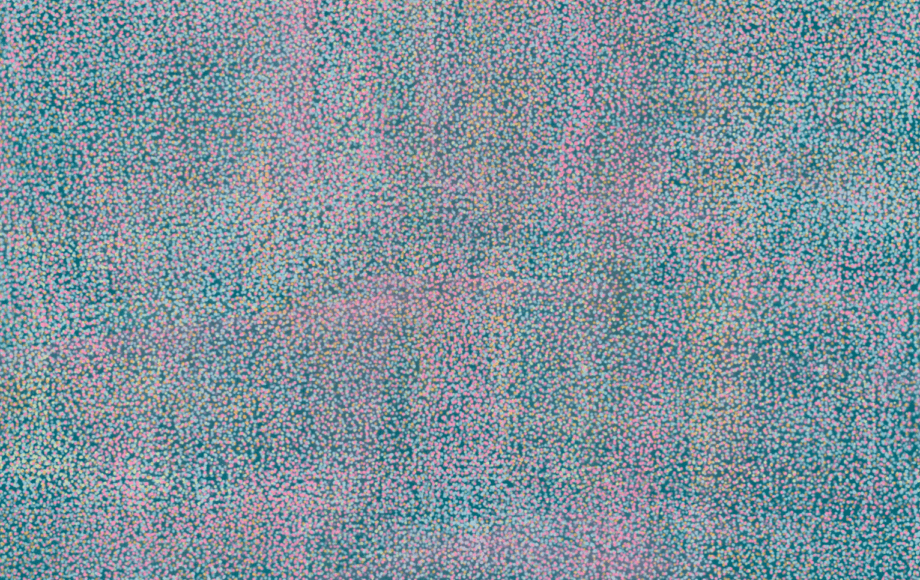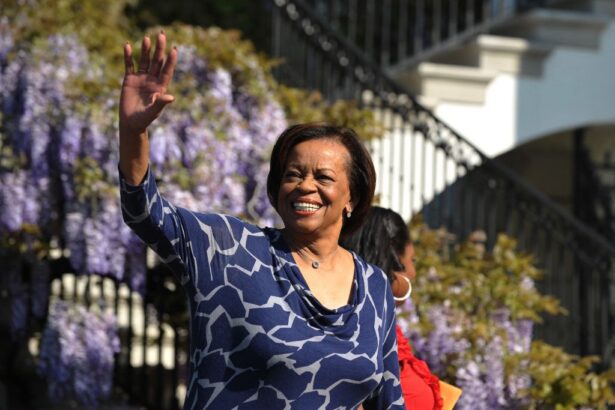From left, Howardena Pindell, early in her career. | © the artist; Howardena Pindell, 2018. | Photo © Nathan Keay, Courtesy White Cube
ARTIST AND CURATOR Howardena Pindell (b. 1943) joined White Cube gallery. Emphasizing color, structure and process, Pindell’s multidisciplinary practice explores an array of social and political issues, often through her own personal experiences.
UK-based White Cube’s representation of Pindell is in collaboration with Garth Greenan, the New York gallery has worked with the artist since 2012. Garth Greenan will focus on the United States, while White Cube will handle Asia and Europe. Pindell was previously represented by London-based Victoria Miro and Garth Greenan.
In June, White Cube will present “Tesseract #16 (2024),” a new work by Pindell at Art Basel in Switzerland. White Cube Hong Kong will open the gallery’s first solo exhibition with Pindell in November. Featuring all new paintings, the show will mark the artist’s first solo outing in Asia, and will be on view in conjunction with a solo exhibition dedicated to Pindell at Garth Greenan.
HOWARDENA PINDELL, “Test Pattern/Event Horizon,” 2022 (acrylic on canvas, 198.1 x 223.5 cm / 78 x 88 inches). | © the artist. Photo © Charles Benton
PINDELL HAS EXPRESSED HERSELF through figuration, abstraction and conceptualism over the course of her five-decade career. She tackles complex issues, from racism and feminism to violence, AIDS, homelessness, and exploitation. Working across painting, drawing, photography, and film, she is best known for her use of countless tiny paper circles made with a hole punch that she meticulously affixes one-by-one to her works, often in thick layers.
Her work at once reflects the currents of society and her own biography. In a video produced by the Baltimore Museum of Art (BMA) in 2019, Pindell noted the origin and significance of the ever present circular motifs in her work:
-
I like working with the circle. I mean it’s kind of, I don’t know. It’s, I hate to use the word iconic, but I’m going to use the word iconic. It’s kind of an iconic form. It’s in the cosmos. The planet is round, the sun is round. And the irony is, when I was at the Modern, one of the shows that I worked on was (Richard) Pousette-Dart. And I believe he used, you know, sort of circular elements.
And I love Seurat, but it really came from my, as a child, and I always mention this, driving with my father in northern Kentucky. My mother’s mother lived near the border of Kentucky. Ohio and Kentucky. And we went to a root beer stand and we were given the same glasses everyone else had except ours had a big red circle at the bottom. And I remember, I might have been seven or eight years old, I remember saying to my father, “What’s this?” “Why this?” And he said because we’re not white. If you weren’t white you would get designated silverware and glassware.
And so that form really remained kind of dormant in my mind until when I was in the graduate school of Art and Architecture at Yale for my MFA. One of the students, Nancy Murata, she was not Japanese, her husband was Japanese, and she started working with this circle and all of a sudden it was like, bing, you know, wow. I suddenly wanted to use circles in everything.
HOWARDENA PINDELL, Untitled #7, 1973 (mixed media on board, 25.7 x 21.3 cm / 10 1/8 x 8 3/8 inches. | © the artist
BORN IN PHILADELPHIA, PA., Pindell lives and works in New York. Her multifaceted career began in the late 1960s when she became the first Black female curator at the Museum of Modern Art (MoMA), a post she held for 12 years (1967-1979). During her tenure at MoMA, Pindell became attuned to racial and gender discrimination at the museum and in the broader field through her own experiences and observations. She would later address the issue, conducting extensive demographic research in the late 1980s.
In 1972, Pindell co-founded A.I.R. Gallery—the first women’s cooperative art gallery in New York. She stepped away from A.I.R. in 1975, frustrated that her colleagues weren’t interested in the intersection of racism and feminism. In 1979, Pindell joined the faculty at the State University of New York, Stony Brook, where she remains a distinguished professor in the Department of Art.
In terms of her artistic practice, Pindell’s work has been acquired by major museums and is represented in important private collection. Shown internationally, she has been the subject of numerous solo institutional and gallery exhibitions.
“Paintings and Drawings by Howardena Pindell,” her earliest solo exhibition, was on view in 1971 at Spelman College in Atlanta, Ga. Most recently, a solo exhibition of Pindell toured Ireland and Britain. “Howardena Pindell: A Renewed Language” was on view at the Irish Museum of Modern Art in Dublin (2023), after being presented under the title “Howardena Pindell: A New Language” at Spike Island in Bristol, UK (2023); Kettle’s Yard in Cambridge, UK (2022); and Fruitmarket in Edinburgh, UK (2022).
HOWARDENA PINDELL, “Manhattan Is Sinking,” 2023 (acrylic on canvas, 198.1 x 223.5 cm / 78 x 88 inches). | © the artist
“Howardena Pindell: What Remains To Be Seen,” the largest-ever survey of the artist, was co-organized by the Museum of Contemporary Art Chicago (where it debuted in 2018) and the Virginia Museum of Fine Arts, under the direction of co-curators Naomi Beckwith and Valerie Cassel Oliver.
Over the past several years, notable group shows have included “Signals: How Video Transformed the World,” “Just Above Midtown: Changing Spaces,” “Black Refractions: Selections from The Studio Museum in Harlem,” “We Wanted a Revolution: Black Radical Women, 1965–85,” “Soul of a Nation: Art in the Age of Black Power, 1963–1983,” and “Magnetic Fields: Expanding American Abstraction, 1960s to Today.”
Pindell is also featured in “Multiplicity: Blackness in Contemporary American Collage.” Organized by the Frist Art Museum in Nashville, Tenn., the traveling exhibition opens July 6 at the Phillips Collection in Washington, D.C.
“All of a sudden, I’m getting awards and praise and I’m kind of stunned by it,…” Pindell said in the BMA video. “Well, I’m thrilled on one level, but I’m stunned. Because the same things that I did years ago that brought rejection, now it’s like wonderful.”
White Cube has six locations: Paris, Hong Kong, Seoul, New York, and two spaces in London. Last year, White Cube opened its first U.S. location in New York on the Upper East Side. The gallery’s New York team is led by Courtney Willis Blair.
Pindell is in good company at White Cube. The gallery represents nearly 70 artists based around the world, including Tunji Adeniyi-Jones, Michael Armitage, Theaster Gates, Ibrahim Mahama, Tiona Nekkia McClodden, Julie Mehretu, Cinga Samson, and the estate of Chicago sculptor Richard Hunt. CT
FIND MORE about Howardena Pindell’s critically acclaimed video “Free, White and 21” (1980) on Culture Type
HOWARDENA PINDELL, “Untitled #1 (Make a Joyful Noise),” 2021 (mixed media on canvas, 214.6 x 213.4 cm / 84 1/2 x 84 inches. | © the artist
Howardena Pindell briefly explains her artistic development around the use of circular motifs with commentary by curators Valerie Cassel Oliver and Naomi Beckwith. | Video by Virginia Museum of Fine Arts
HOWARDENA PINDELL, “Separate but Equal Genocide: AIDS,” 1991-92 (mixed media on canvas, 201.3 x 231.1 cm / 79 1/4 x 91 inches). | © the artist
HOWARDENA PINDELL, “Untitled #23 (Bermuda),” 2023 (mixed media on canvas, 205.7 x 257.8 cm / 81 x 101 1/2 inches. | © the artist. Photo © Charles Benton
Howardena Pindell discusses her practice, sharing how she came to working with circles, transition from figurative to abstract work, and criticism of the art world. | Video by Baltimore Museum of Art
HOWARDENA PINDELL, Untitled, 1972–73 (acrylic and paper on canvas, 222.3 x 228.6 cm / 87 1/2 x 90 inches). | © the artist
BOOKSHELF
Co-authored by Naomi Beckwith and Valerie Cassel Oliver, “Howardena Pindell: What Remains to be Seen” documents the artist’s expansive traveling survey. “Howardena Pindell: Rope/Fire/Water” accompanied her more recent exhibition at The Shed in New York. “Howardena Pindell: A New Language” documents her recent UK traveling show. The exhibition catalog “Howardena Pindell: Paintings and Drawings: A Retrospective Exhibition 1972-1992 is authored by Lowery Stokes Sims. Additional publications include “Howardena Pindell: Reclaiming Abstraction” and “The Heart of the Question: The Writings and Paintings of Howardena Pindell.” Also consider, Kellie Jones’s “EyeMinded: Living and Writing Contemporary Art,” featuring an interview with Howardena Pindell on a range of topics.











